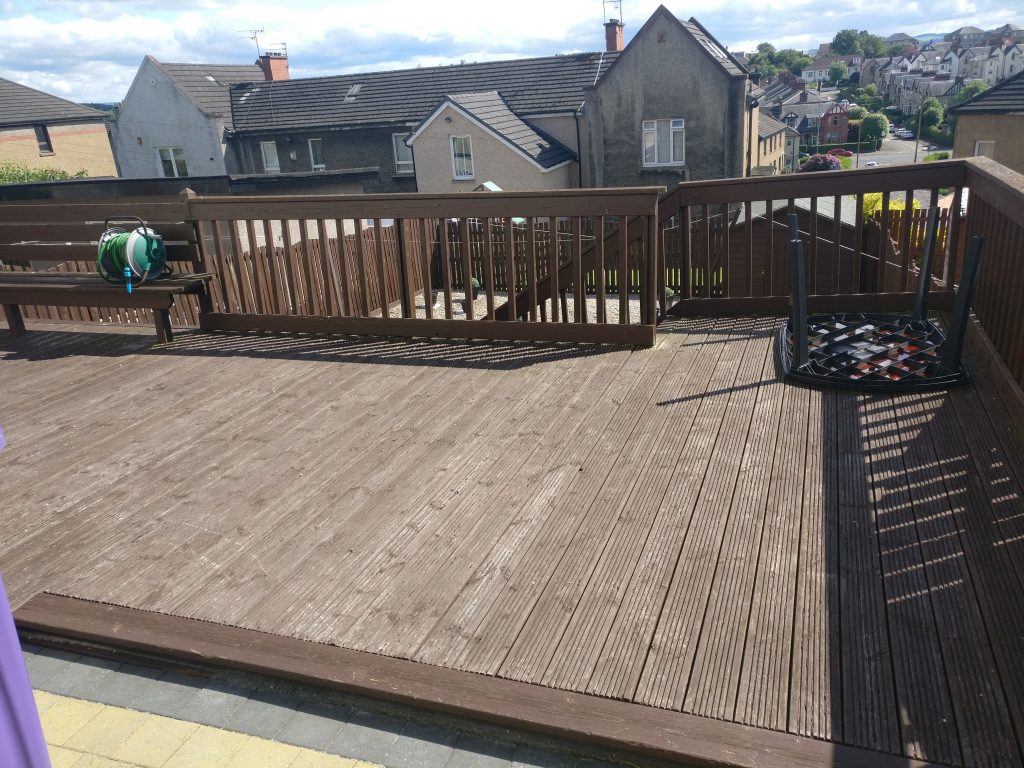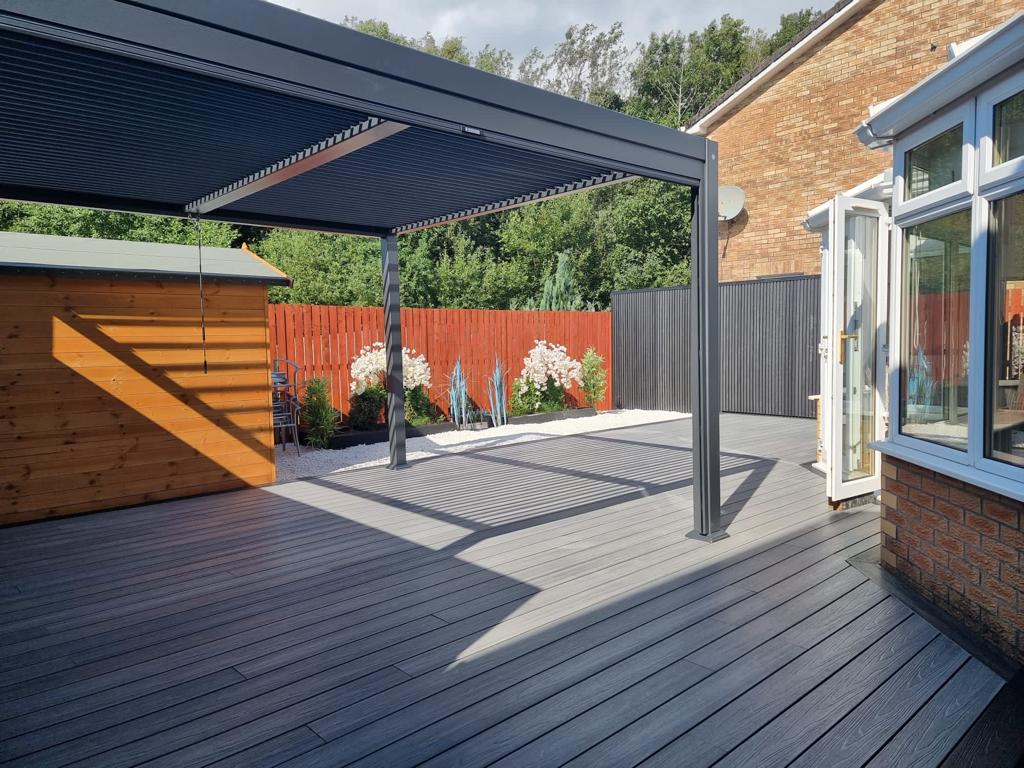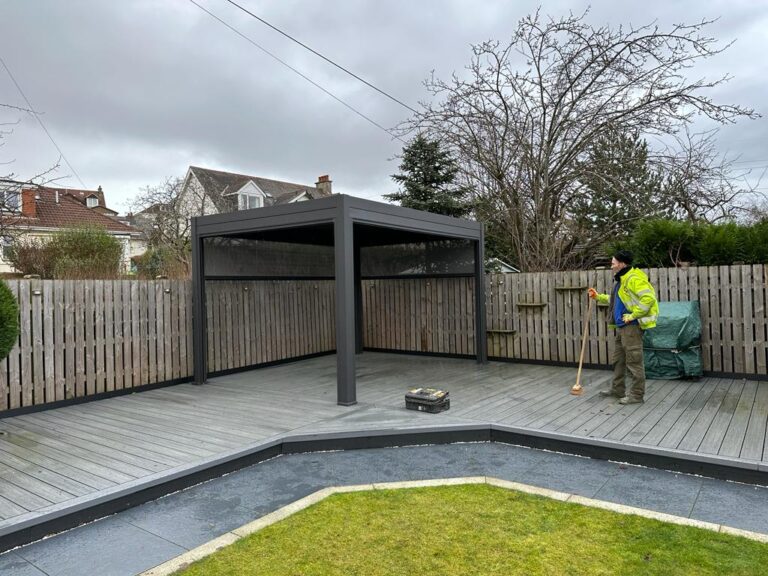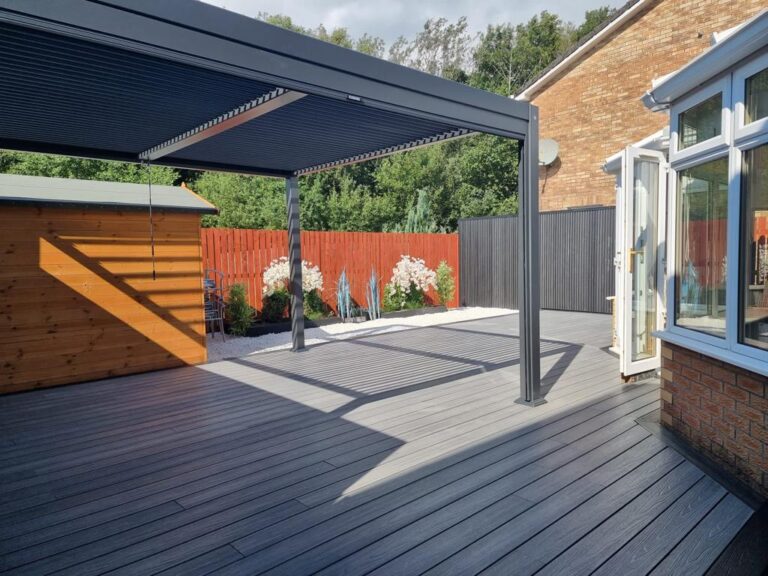Composite decking has become a popular choice for homeowners looking to enhance the beauty and functionality of their outdoor living spaces. But what exactly is composite decking, and how is it installed? In this comprehensive guide, we will explore everything you need to know about composite decking, including its benefits, installation process, recommended gap size, types, and how to prevent gaps from forming. We will also delve into alternatives to composite decking, providing you with a well-rounded understanding of your options.
Whether you’re considering a composite decking project or simply curious about this versatile material, this article will equip you with the knowledge needed to make informed decisions. So, let’s dive into the world of composite decking and discover the possibilities it offers for your outdoor oasis.

What Is Composite Decking?
Composite decking is a modern alternative to traditional wooden decks, offering a durable and low-maintenance solution for outdoor home improvement projects.
It is made from a combination of wood fibres, plastics, and binding agents, resulting in a sturdy and weather-resistant material that does not warp, rot, or splinter like natural wood. This makes composite decking a perfect choice for areas with heavy foot traffic, exposure to the elements, and constant use.
Its streamlined installation process and long-term cost-effectiveness make it an attractive option for homeowners looking to enhance their outdoor living spaces.
How Is Composite Decking Installed?
The installation of composite decking involves careful consideration of spacing, proper alignment, and efficient water drainage to ensure long-term durability and performance.
When installing composite decking, it is crucial to ensure that there is adequate spacing between the boards to allow for expansion and contraction due to temperature changes. This typically requires leaving a small gap between each board. Incorporating proper water drainage techniques, such as utilising a slight slope away from the house and installing a membrane or drip edge, can prevent water from pooling and causing potential damage.
Following these best practices during installation will contribute to a successful, long-lasting composite decking installation.
What are the benefits of composite decking?
Composite decking offers numerous benefits, including low maintenance requirements, durability against outdoor elements, and the application of best practices for long-term performance.
This type of decking is resistant to fading, staining, and scratching, requiring only occasional cleaning with soap and water to maintain its appearance. By following best practices such as regular inspection for wear or damage, promptly addressing any issues, and avoiding the use of harsh chemicals, homeowners can ensure that their composite decking continues to perform well over time.
The use of protective mats under grills or furniture can help prevent any potential discolouration or damage, further extending the lifespan of the decking material.
Low Maintenance
One of the primary benefits of composite decking is its low maintenance nature, reducing the need for frequent upkeep and application of best maintenance practices.
This type of decking requires minimal maintenance efforts compared to traditional wood decks. With composite decking, there’s no need for staining, sealing, or painting, saving homeowners time and resources.
To keep composite decking looking its best, a simple routine of regular sweeping and occasional cleaning with mild soap and water is often sufficient. This not only streamlines maintenance but also ensures that the decking retains its appearance and durability for years to come.
Longevity
The durability of composite decking makes it an ideal choice for outdoor applications, offering resilience against environmental factors and the ability to withstand heavy use when following best practices.
This material is resistant to mould, mildew and rot, which are common concerns in outdoor environments. To maintain its structural integrity, regular cleaning and inspections are essential. Avoiding dragging heavy furniture or sharp objects across the surface can help prevent scratches and damage. Proper installation, including adequate support and spacing, also contributes to the longevity of composite decking.
By following these best practices, homeowners can ensure that their composite decking retains its durability and aesthetic appeal for years to come.
Eco-Friendly
Composite decking presents an eco-friendly choice for outdoor projects, incorporating sustainable materials and reducing the environmental impact when considering eco-friendly practices.
Its use of recycled wood fibres and plastic helps reduce the pressure on natural resources and diminishes waste sent to landfills. The longevity of composite decking reduces the frequency of replacements, further reducing environmental strain. By choosing composite decking, consumers contribute to sustainable building practices and lessen the demand for traditional wood, which in turn prevents deforestation and conserves natural habitats.
Do You Leave Gaps Between Composite Decking?
Proper spacing is crucial in composite decking installation, addressing concerns related to expansion, contraction, and water drainage for optimal performance.
Inadequate spacing can lead to a range of issues. To ensure proper ventilation and prevent water build-up, it is recommended to leave a minimum 1/8-inch gap between composite decking boards. In areas with high moisture, a larger gap of up to 1/4 inch may be necessary. Without these gaps, the boards may warp, buckle, or experience surface damage. Insufficient spacing can hinder the natural expansion and contraction of the material, potentially compromising the structural integrity of the entire deck.

What is the recommended gap size?
The recommended gap size between composite decking boards is crucial to accommodate expansion, contraction, and efficient water drainage, ensuring long-term stability after installation.
Proper spacing between the composite decking boards is typically advised to be at least 3/16 of an inch. This allows for natural thermal expansion and contraction that occurs with changes in temperature and humidity levels. A larger gap of about 1/4 inch is recommended to facilitate efficient water drainage, preventing any potential pooling of water on the surface.
Improper spacing can lead to issues such as buckling, warping, and potential moisture-related damage, emphasising the significance of adhering to the recommended gap size guidelines.
What Happens If You Don’t Leave Gaps?
Failure to leave appropriate gaps between composite decking can lead to issues such as buckling, warping, and inefficient water drainage, impacting the overall performance and longevity of the deck.
These spacing issues can result in the accumulation of moisture, causing the composite boards to warp and buckle over time. Poor water drainage, due to inadequate gaps, can lead to potential mould and mildew growth, further deteriorating the decking material. This not only compromises the aesthetic appeal of the deck but also poses structural integrity risks. It is crucial to follow manufacturer guidelines for gapping to ensure proper ventilation and drainage, preventing costly repairs and maintaining the deck’s durability.
What are the different types of composite decking?
Composite decking comes in various types, including capped and uncapped options, each offering distinct features and considerations for outdoor installations.
Capped composite decking is coated with a protective layer, making it resistant to scratches, stains, and fading while providing enhanced durability. On the other hand, uncapped composite decking displays a more natural look and feel, with a wood-like texture, but may require more maintenance.
When choosing between the two, consider factors such as climate, maintenance preferences and budget. Selecting the right type of composite decking is crucial for achieving a long-lasting, visually appealing outdoor space.
Capped Composite Decking
Capped composite decking provides added protection against the elements, making it suitable for outdoor installation projects that require enhanced durability and weather resistance.
This type of decking is designed to withstand harsh weather conditions, including intense sunlight, heavy rains, and fluctuating temperatures, without losing its colour or structural integrity. Its innovative capping technology prevents moisture penetration and minimises the risk of mould, mildew, and rot, ensuring long-lasting performance.
Installing capped composite decking is also relatively straightforward, with many products featuring convenient concealed fastening systems for a seamless, polished look. This deck solution is an ideal choice for homeowners seeking a low-maintenance, high-durability outdoor decking option.
Uncapped Composite Decking
Uncapped composite decking offers a natural wood-like appearance whilst requiring regular maintenance for outdoor applications, necessitating careful consideration for long-term upkeep and performance.
It is important to note that uncapped composite decking, whilst providing an attractive alternative to traditional wood options, requires regular upkeep to maintain its appearance and structural integrity. Common maintenance requirements include regular cleaning to eliminate debris and prevent mould or mildew growth, as well as thorough inspections for any signs of wear or damage. Proper installation techniques and best practices for outdoor use, such as adequate ventilation and proper water drainage, are crucial for maximising the lifespan of uncapped composite decking in outdoor settings.
How To Prevent Gaps From Forming In Composite Decking?
Preventing gaps from forming in composite decking involves proper installation techniques, regular maintenance, and mindful consideration of expansion and contraction factors to maintain deck integrity.
One effective method for preventing gaps in composite decking is to use concealed fastening systems during installation. This helps secure the boards tightly and reduces the likelihood of gaps forming over time. Regular inspection and maintenance, such as checking for any loose or raised boards, will help to identify and address potential gap issues early on.
It’s also essential to follow manufacturer guidelines for spacing and fastening to ensure proper expansion and contraction management, which is crucial in preventing gaps in composite decking.
Proper Installation
Proper installation of composite decking is crucial to minimise gap formation, ensuring precise spacing, secure fastening, and adherence to best practices for long-term performance.
The spacing requirements for composite decking are essential to prevent issues like warping and buckling. Utilising secure fastening methods, such as hidden fasteners or specialised composite deck screws, is vital to maintain the structural integrity and aesthetic appeal of the decking.
Homeowners often express concerns about proper ventilation and drainage beneath the decking, emphasising the importance of following manufacturer’s guidelines and local building codes during installation. It’s evident that attention to detail in installation processes is key to extending the longevity and visual appeal of composite decking.
Regular Maintenance
Regular maintenance of composite decking is essential for preventing stagnant water, which can lead to mould and mildew growth, causing damage to the decking material. Regular inspection of the drainage system, such as ensuring gutters are free from debris, is vital to maintain functionality. Implementing a routine cleaning schedule, including gentle washing with a composite deck cleaner and avoiding harsh chemicals, can help preserve the decking’s appearance and structural integrity. By consistently addressing maintenance needs, homeowners can minimise the risk of gaps forming and ensure the longevity of their composite decking.
What Are The Alternatives To Composite Decking?
In addition to composite decking, alternatives such as wood, PVC, and aluminium decking offer diverse options for outdoor installations, each with unique characteristics and considerations.
Whilst wood decking provides a natural, classic look and can be stained or painted, it requires regular maintenance to prevent rot and decay. PVC decking, on the other hand, offers a low-maintenance option with excellent durability and resistance to moisture.
Meanwhile, aluminium decking is prized for its strength, weather resistance, and minimal maintenance requirements. Understanding the specific needs of the outdoor space, maintenance preferences, and budget considerations is crucial when choosing the ideal decking material for a long-lasting and appealing outdoor living area.
Wood Decking
Timber decking remains a popular choice for outdoor installations, requiring regular maintenance and considerations for outdoor use and home improvement projects. It is valued for its natural aesthetic appeal and the warmth it brings to outdoor spaces.
Being exposed to the elements means that timber decking needs routine upkeep, including cleaning and sealing to prevent moisture damage and protect it from UV rays. Common issues include warping, rot, and colour fading, making regular inspection and repairs essential. To maintain its integrity and prolong its lifespan, homeowners should aim to reseal and refinish their timber decking every 1-3 years, depending on the climate and wear and tear it experiences.
PVC Decking
PVC decking offers a low-maintenance alternative for outdoor installations, focusing on efficient water drainage, durable installation, and considerations for outdoor use.
This type of decking material is designed to resist water absorption, making it an ideal choice for areas prone to moisture and humidity. Its durable construction and UV-resistant properties make it suitable for withstanding outdoor elements. When installing PVC decking, it’s important to consider the gradient for proper water drainage to prevent standing water, which can lead to issues such as mould or mildew. It’s crucial to follow manufacturer guidelines to ensure proper ventilation during installation to prolong the life of the deck.
Aluminium Decking
Aluminium decking provides a durable and low-maintenance solution for outdoor projects, offering resilience against outdoor elements and the application of best practices for long-term performance.
The material’s resistance to moisture, UV radiation, and temperature variations makes it a superior choice for outdoor use. Regular cleaning with mild soap and water, and the occasional application of a protective coating, ensures its longevity and aesthetic appeal. Its ability to withstand heavy foot traffic and exposure to the elements makes it suitable for decks, patios, and other outdoor areas. With proper care and maintenance, aluminium decking holds up well in diverse weather conditions, serving as a reliable and long-lasting investment for outdoor living spaces.








